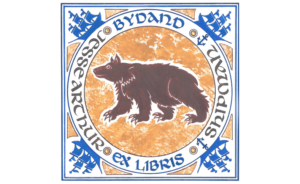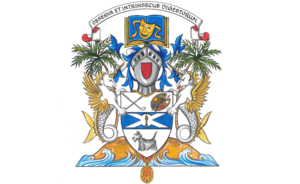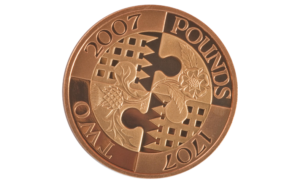This postcard design was one of a set produced showing the Arms of the Chiefs of some of the most prominent Clans in Scotland.
The history of the Clan and the origins of the Chief’s Arms is complex.
The name of Murray is derived from their first lands in Moray. The first owners of the lands were styled ‘de Moravia’ which gradually became Moray or Murray. The gold double ‘tressure’ flory-counter-flory indicates Royal association. Although the Arms of the Dukes of Atholl feature 3 Crests above the Helm, the present Chief has decided that the demi-wildman and the motto ‘Furth fortune and fill the fetters’ should be the crest badge for all Murray clansmen.

Motto: a word or more upon a scroll
which in Scotland is usually shown above the crest. Sometimes, in Scotland, a Coat of Arms will show a Motto both above and below the Shield.
Crest: a figure, animal, plant or object affixed to the Helmet. Nowadays, Crests tend to reflect the occupation, hobbies or interests of the Petitioner. It is not necessary to have a crest on a Coat of Arms.
Wreath: a twisted band composed of the two principal colours shown on the Shield. This band holds the Mantle securely onto the top of the Helm.
Mantle: a covering that flows from the Helmet. This covering was used by Crusaders journeying to hot climates to shade their armour from the sun. In battle, it inevitably became torn. Over the Centuries, artists have been very keen to use these torn edges in order to create ornate designs.
Helmet: the covering for protection of the head.
Shield: a device for protection bearing ornamentation for identification. The Shield is the principal element in a Coat of Arms.










